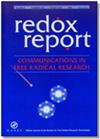血清尿酸水平预测依达拉奉治疗后肌萎缩侧索硬化的进展
IF 5.2
2区 生物学
Q1 BIOCHEMISTRY & MOLECULAR BIOLOGY
引用次数: 5
摘要
尿酸和依达拉奉可能通过降低氧化应激对肌萎缩性侧索硬化症(ALS)发挥神经保护作用。我们分析依达拉奉治疗后尿酸水平升高的患者依达拉奉治疗效果是否显著。材料与方法选取40例接受依达拉奉治疗的ALS患者。记录基线尿酸水平和依达拉奉治疗后尿酸下降的速率。根据治疗后6-24周的基线ALSFRS-R评分和ALSFRS-R评分计算ALS功能评定量表修订后的变化率(ΔALSFRS-R/月)。结果治疗后血清尿酸水平下降26例(65%),升高12例(30%)。尿酸降低组患者ΔALSFRS-R/月(中位数为1.5 [Q1-Q3, 0.7-3.1])明显快于尿酸升高组患者(中位数为0.2 [0-1.0],p = 0.021)。在调整年龄、初始症状和利鲁唑给药后,高基线尿酸水平和低尿酸下降率与较慢的疾病进展相关(p = 0.030和p = 0.041)。高基线值和低尿酸下降率可能预测依达拉奉治疗的ALS患者疾病进展缓慢。本文章由计算机程序翻译,如有差异,请以英文原文为准。
Serum uric acid level predicts the progression of amyotrophic lateral sclerosis following treatment with edaravone
ABSTRACT
Introduction Uric acid and edaravone might exert a neuroprotective effect in amyotrophic lateral sclerosis (ALS) by reducing oxidative stress. We analyzed whether the treatment effect of edaravone is pronounced in patients whose uric acid level increased after the treatment with edaravone. Materials and methods Forty patients with ALS who underwent treatment with edaravone were included. Baseline uric acid level and the rate of decline in uric acid after edaravone treatment were recorded. The rate of change of ALS functional rating scale-revised (ΔALSFRS-R/month) was calculated based on baseline ALSFRS-R score and ALSFRS-R score 6–24 weeks after the treatment. Results The serum uric acid levels decreased after treatment in 26 (65%) patients and increased in 12 (30%) patients. The ΔALSFRS-R/month was significantly faster in patients whose uric acid decreased (median 1.5 [Q1–Q3, 0.7–3.1]) than in patients whose uric acid increased (0.2 [0–1.0], p = 0.021). A high baseline uric acid level and low rate of decline in uric acid was associated with slower disease progression after adjusting for age, initial symptoms, and riluzole administration (p = 0.030 and p = 0.041, respectively). Discussion High baseline values and low rate of decline in uric acid may predict slow disease progression in ALS patients treated with edaravone.
求助全文
通过发布文献求助,成功后即可免费获取论文全文。
去求助
来源期刊

Redox Report
生物-生化与分子生物学
CiteScore
6.10
自引率
0.00%
发文量
28
审稿时长
>12 weeks
期刊介绍:
Redox Report is a multidisciplinary peer-reviewed open access journal focusing on the role of free radicals, oxidative stress, activated oxygen, perioxidative and redox processes, primarily in the human environment and human pathology. Relevant papers on the animal and plant environment, biology and pathology will also be included.
While emphasis is placed upon methodological and intellectual advances underpinned by new data, the journal offers scope for review, hypotheses, critiques and other forms of discussion.
 求助内容:
求助内容: 应助结果提醒方式:
应助结果提醒方式:


